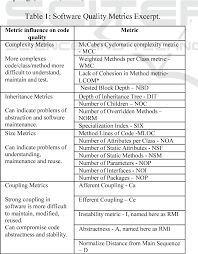Mastering Python Web Programming: Building Dynamic and Interactive Websites
The Power of Python in Web Programming
Python has established itself as a versatile and powerful programming language, not only in software development but also in web programming. With its simplicity, readability, and vast array of libraries and frameworks, Python has become a popular choice for building dynamic and interactive websites.
Benefits of Using Python in Web Development
One of the key advantages of using Python for web programming is its ease of use. The clean and concise syntax of Python makes it easy to learn and understand, even for beginners. This results in faster development cycles and efficient code maintenance.
Python’s extensive collection of libraries and frameworks further enhances its capabilities in web development. Frameworks like Django and Flask provide developers with powerful tools to create robust web applications with minimal effort. These frameworks handle many common tasks, such as URL routing, database integration, and form processing, allowing developers to focus on building the core functionality of their websites.
Scalability and Performance
Python’s scalability is another reason why it is a preferred choice for web development. Whether you are building a simple blog or a complex web application, Python can scale to meet your needs. Its flexibility allows developers to start small and expand their projects as they grow.
In terms of performance, Python may not be as fast as some other languages like C++ or Java, but its performance is more than adequate for most web applications. Additionally, advancements in technologies like Just-In-Time (JIT) compilation have improved Python’s performance significantly.
Community Support and Resources
The Python community is vibrant and active, providing developers with access to a wealth of resources, tutorials, forums, and documentation. Whether you are a seasoned developer or just starting out, you can find support and guidance from the vast community of Python enthusiasts.
Conclusion
In conclusion, Python’s versatility, readability, extensive libraries, scalability, performance improvements, and strong community support make it an excellent choice for web programming. Whether you are developing a personal blog or a complex web application, Python provides the tools you need to bring your ideas to life on the web.
5 Essential Tips for Mastering Python Web Development
- Use a web framework like Flask or Django to simplify web development in Python.
- Utilize virtual environments to manage dependencies and isolate project environments.
- Understand and use RESTful APIs for creating robust and scalable web applications.
- Implement proper security measures such as input validation, sanitization, and protection against common vulnerabilities.
- Optimize performance by caching data, minimizing database queries, and employing asynchronous programming when necessary.
Use a web framework like Flask or Django to simplify web development in Python.
Using a web framework such as Flask or Django can significantly simplify web development in Python. These frameworks provide a structured way to handle common web development tasks, such as routing, templating, and database integration, allowing developers to focus on building the core features of their web applications. By leveraging the capabilities of Flask or Django, developers can expedite the development process, improve code organization, and create robust and scalable web applications with ease.
Utilize virtual environments to manage dependencies and isolate project environments.
Utilizing virtual environments in Python web programming is a crucial tip to manage dependencies and isolate project environments effectively. By creating separate virtual environments for each project, developers can ensure that the dependencies required by one project do not interfere with those of another. This practice helps maintain a clean and organized development environment, prevents version conflicts, and simplifies the process of sharing projects with collaborators. Virtual environments offer a controlled space where specific packages and versions can be installed, making it easier to replicate the project’s environment across different machines or at various stages of development.
Understand and use RESTful APIs for creating robust and scalable web applications.
Understanding and utilizing RESTful APIs is crucial for developing robust and scalable web applications in Python. By adhering to REST principles, developers can design APIs that are intuitive, efficient, and easy to maintain. RESTful APIs enable seamless communication between different components of a web application, allowing for flexibility and scalability as the project grows. By leveraging RESTful architecture in Python web programming, developers can ensure that their applications are well-structured, performant, and capable of handling complex interactions with ease.
Implement proper security measures such as input validation, sanitization, and protection against common vulnerabilities.
When engaging in Python web programming, it is crucial to implement proper security measures to safeguard your application. This includes incorporating practices such as thorough input validation, sanitization of user inputs, and protection against common vulnerabilities like SQL injection and cross-site scripting. By prioritizing security in your development process, you can mitigate the risk of potential threats and ensure the integrity and confidentiality of your web application’s data.
Optimize performance by caching data, minimizing database queries, and employing asynchronous programming when necessary.
To optimize performance in Python web programming, it is crucial to implement efficient strategies such as caching data, reducing database queries, and utilizing asynchronous programming when appropriate. By caching frequently accessed data, we can minimize the need to fetch information from the database repeatedly, thus improving response times. Additionally, minimizing database queries helps reduce the load on the database server and enhances overall application speed. Employing asynchronous programming allows for non-blocking operations, enabling concurrent tasks to run efficiently and boosting performance where parallel processing is beneficial. By incorporating these techniques thoughtfully, developers can enhance the speed and responsiveness of their web applications effectively.




